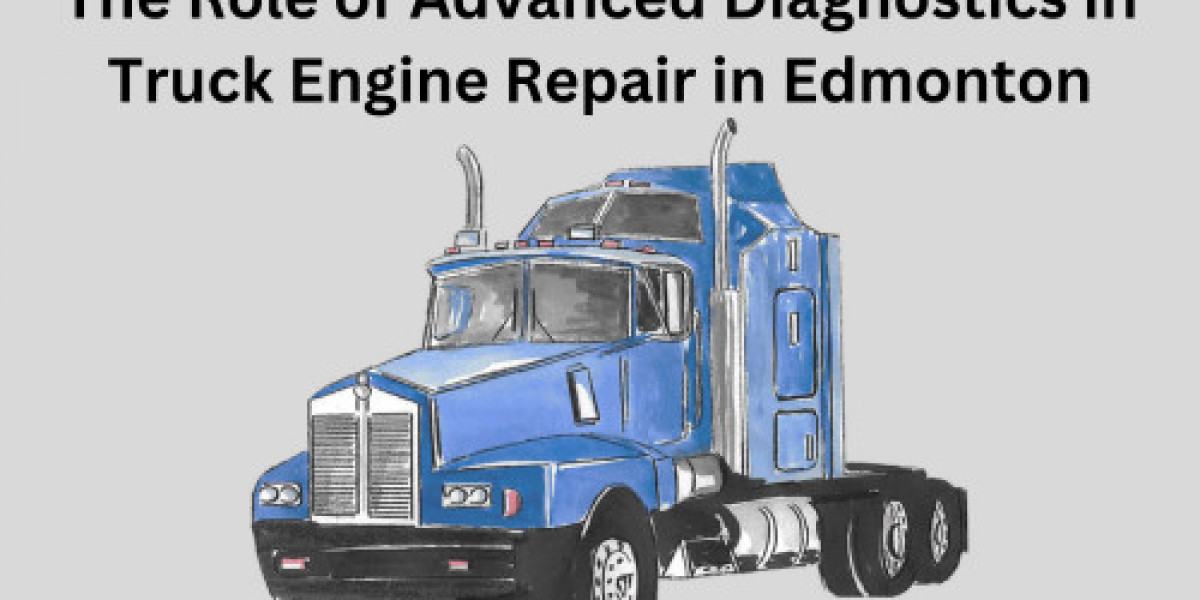In the world of truck engine repair, advanced diagnostic tools and technology play a crucial role in accurately identifying and addressing engine issues. For truck owners in Edmonton, understanding the importance of advanced diagnostics can help ensure their vehicles receive the best possible care. This blog explores the role of advanced diagnostics in truck engine repair, highlighting the benefits and key technologies used by repair shops.
The Evolution of Diagnostic Technology
The field of automotive diagnostics has evolved significantly over the years. Traditional methods relied heavily on visual inspections and manual testing, which could be time-consuming and prone to errors. Today, advanced diagnostic tools have revolutionized the repair process, offering several advantages:
- Precision: Advanced diagnostics provide precise information about engine problems, allowing mechanics to pinpoint issues accurately.
- Efficiency: Modern diagnostic tools can quickly identify problems, reducing the time needed for repairs and minimizing vehicle downtime.
- Comprehensive Analysis: Advanced diagnostics offer a comprehensive analysis of the engine and related systems, ensuring all potential issues are identified and addressed.
Key Diagnostic Tools and Technologies
Several advanced diagnostic tools and technologies are commonly used in truck engine repair. Here are some of the most important:
- Onboard Diagnostics (OBD) Systems: Most modern trucks are equipped with OBD systems that monitor various engine parameters and store error codes when issues are detected. Mechanics can access these codes using OBD scanners to diagnose problems quickly.
- Diagnostic Scanners: These handheld or computer-based devices interface with the truck’s OBD system to read and interpret error codes. They provide detailed information about specific issues, such as sensor malfunctions or system failures.
- Oscilloscopes: Oscilloscopes are used to analyze electrical signals and waveforms in the engine’s electronic components. They help diagnose issues with sensors, ignition systems, and other electrical parts.
- Fuel Pressure Testers: These tools measure the fuel pressure in the engine’s fuel system, helping identify problems such as clogged fuel filters, malfunctioning fuel pumps, or fuel injector issues.
- Compression Testers: Compression testers measure the pressure in each cylinder during the compression stroke. Low compression readings can indicate problems such as worn piston rings, damaged valves, or head gasket issues.
- Smoke Machines: Smoke machines are used to detect vacuum leaks in the engine. By introducing smoke into the intake system, mechanics can identify leaks that may be affecting engine performance.
Benefits of Advanced Diagnostics
The use of advanced diagnostics in truck engine repair offers several key benefits:
- Accurate Diagnosis: Advanced diagnostic tools provide accurate and reliable information about engine problems, reducing the risk of misdiagnosis and unnecessary repairs.
- Cost Savings: By precisely identifying issues, advanced diagnostics help avoid the cost of trial-and-error repairs and the replacement of unnecessary parts.
- Reduced Downtime: Quick and accurate diagnosis means repairs can be completed more efficiently, reducing the time trucks spend in the repair shop and getting them back on the road faster.
- Improved Performance: Addressing engine problems promptly and accurately ensures optimal engine performance, enhancing fuel efficiency, power, and overall reliability.
- Preventative Maintenance: Advanced diagnostics can also be used for preventative maintenance, identifying potential issues before they become major problems and extending the lifespan of the engine.
The Diagnostic Process
The diagnostic process typically involves several key steps:
- Initial Assessment: Mechanics will start by asking about the symptoms the truck has been exhibiting, such as unusual noises, loss of power, or warning lights.
- Error Code Retrieval: Using diagnostic scanners, mechanics retrieve error codes from the truck’s OBD system. These codes provide valuable information about specific issues.
- Visual and Manual Inspection: A thorough visual and manual inspection of the engine and related components helps identify obvious signs of damage or wear.
- Advanced Testing: Depending on the error codes and initial findings, mechanics may use additional diagnostic tools such as oscilloscopes, fuel pressure testers, or compression testers to gather more detailed information.
- Analysis and Diagnosis: The collected data is analyzed to pinpoint the exact cause of the problem. Mechanics will interpret the findings and develop a repair plan.
Conclusion
Advanced diagnostics play a vital role in Edmonton truck engine repair services, offering precision, efficiency, and comprehensive analysis. For truck owners in Edmonton, understanding the benefits of advanced diagnostics can help ensure their vehicles receive the best possible care. By choosing a repair shop equipped with modern diagnostic tools and technologies, truck owners can enjoy accurate diagnoses, cost-effective repairs, and improved engine performance. Advanced diagnostics not only enhance the repair process but also contribute to preventative maintenance, extending the lifespan of truck engines and ensuring reliable operation.








